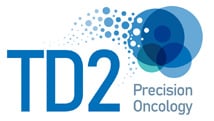If you’re exploring nonalcoholic fatty liver disease (NAFLD), nonalcoholic steatohepatitis (NASH) or cancer-associated liver fibrosis, you may want to learn about TD2’s latest murine model: liver fibrosis induced by a choline-deficient, L-amino acid-defined, high-fat diet. The new model is the latest in a series of liver fibrosis animal models TD2 has in its catalogue, that also includes diethylnitrosamine (DEN) and carbon tetrachloride (CCl4) induction models.
The Role of Choline Deficiency
Unlike the chemically induced models, however, the choline-deficient, high-fat diet model replicates dietary habits of a particular subset of patients that can result in pathologic changes in the liver, including fibrosis. In previous studies dating as far back as the 1930s, choline’s ability to remove fat from the liver means a diet lacking the nutrient can activate fibrosis and cancer development.
In the United States, choline sources mainly include meat, poultry, dairy, fish and eggs—plus vegetables such as broccoli and cauliflower, as well as seeds, nuts and whole grains.
Triggering Fibrosis in the Liver
By stripping the animals’ diets of those nutrients and focusing on high-fat foods instead, the animals will in time develop fibrosis. Fibrotic conditions can be highly favorable to liver cancer development, the fifth deadliest cancer in the United States, according to the American Cancer Society. In fact, more than 8 in 10 hepatocellular carcinomas (HCCs) form in livers with fibrosis or cirrhosis.
Given the fact that only 18 percent of liver cancer patients will survive past five years (American Cancer Society), studying medicines to reduce fibrosis using specific animal models isn’t just smart science—it’s crucial.
Practical Applications of a Choline-Deficient Model
TD2’s choline-deficient, high-fat model can be used to study the drug effects on fibrosis using qualitative pathology scoring—as well as to assess a drug’s potential in fibrotic cancers as a surrogate study. Researchers exploring nonalcoholic steatohepatitis (NASH) could also make use of the models’ fibrotic properties.
Those applications all link back to the fact that fibrotic diseases are a widespread health problem. Having access to a diverse model run by an industry, fee-for-service company can help speed development of promising drug candidates.
Given the fact that many cancers are highly fibrotic, fibrosis-reducing drugs can allow for better and more efficient delivery of standard-of-care therapeutics to the tumor. Increased fibrosis can also limit the immune cells from getting to the tumor, reducing the effectiveness of new immunotherapies. Compounds that reduce fibrosis in these experimental models could later be found to significantly improve cancer treatments.
Coming Soon
Check back with TD2 in Q1 2019 for news on a new model of idiopathic pulmonary fibrosis (IPF) that is currently in validation. This model is designed to better recapitulate the human disease and overcome some of the limitations of the current IPF models.


